
The Emotet malware kicked into action yesterday after a ten-month hiatus with multiple spam campaigns delivering malicious documents to mailboxes worldwide.
Emotet is a malware infection that is distributed through spam campaigns with malicious attachments. If a user opens the attachment, malicious macros or JavaScript will download the Emotet DLL and load it into memory using PowerShell.
Once loaded, the malware will search for and steal emails to use in future spam campaigns and drop additional payloads such as TrickBot or Qbot that commonly lead to ransomware infections.
Emotet spamming begins again
Last night, cybersecurity researcher Brad Duncan published a SANS Handler Diary on how the Emotet botnet had begun spamming multiple email campaigns to infect devices with the Emotet malware.
According to Duncan, the spam campaigns use replay-chain emails to lure the recipient into opening attached malicious Word, Excel, and password-protected ZIP files.
Reply-chain phishing emails are when previously stolen email threads are used with spoofed replies to distribute malware to other users.
In the samples shared by Duncan, we can see Emotet using reply-chains related to a "missing wallet," a CyberMonday sale, canceled meetings, political donation drives, and the termination of dental insurance.
Attached to these emails are Excel or Word documents with malicious macros or a password-protected ZIP file attachment containing a malicious Word document, with examples shown below.
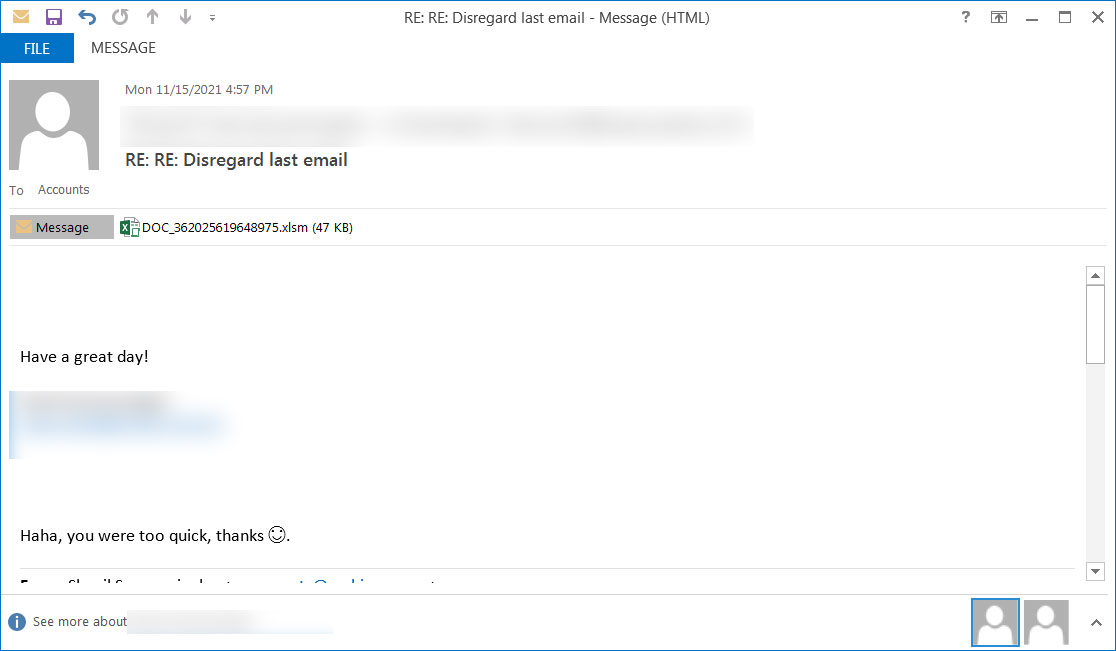
Source: Brad Duncan
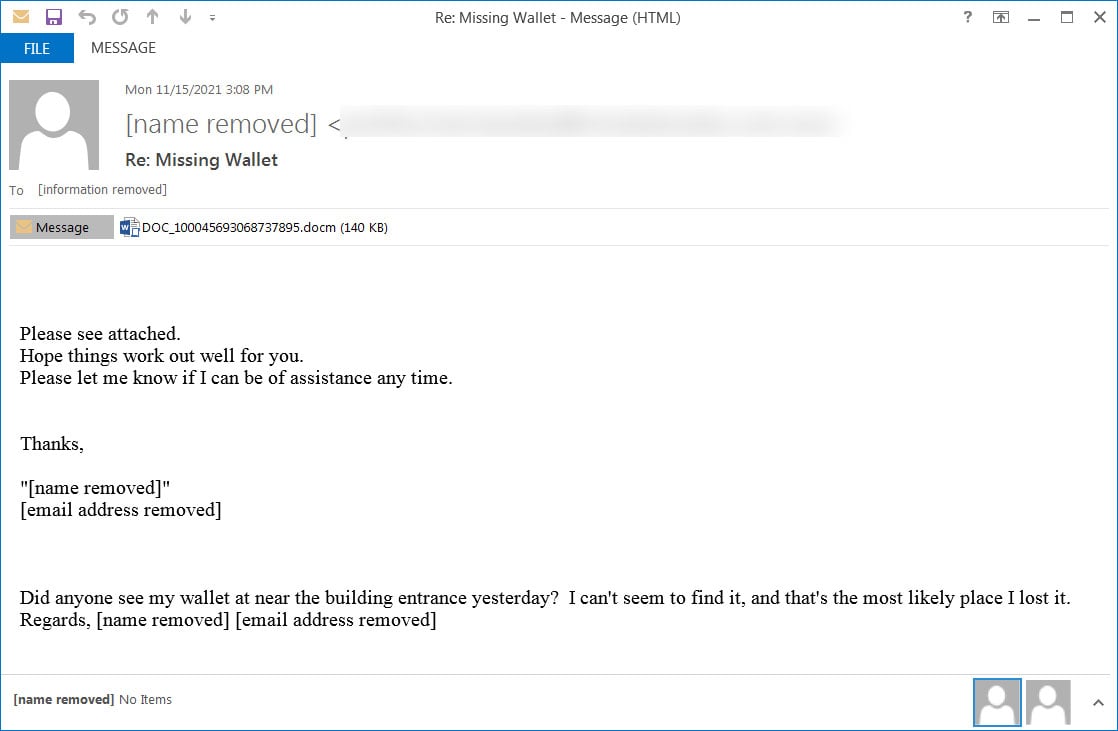
Source: Brad Duncan
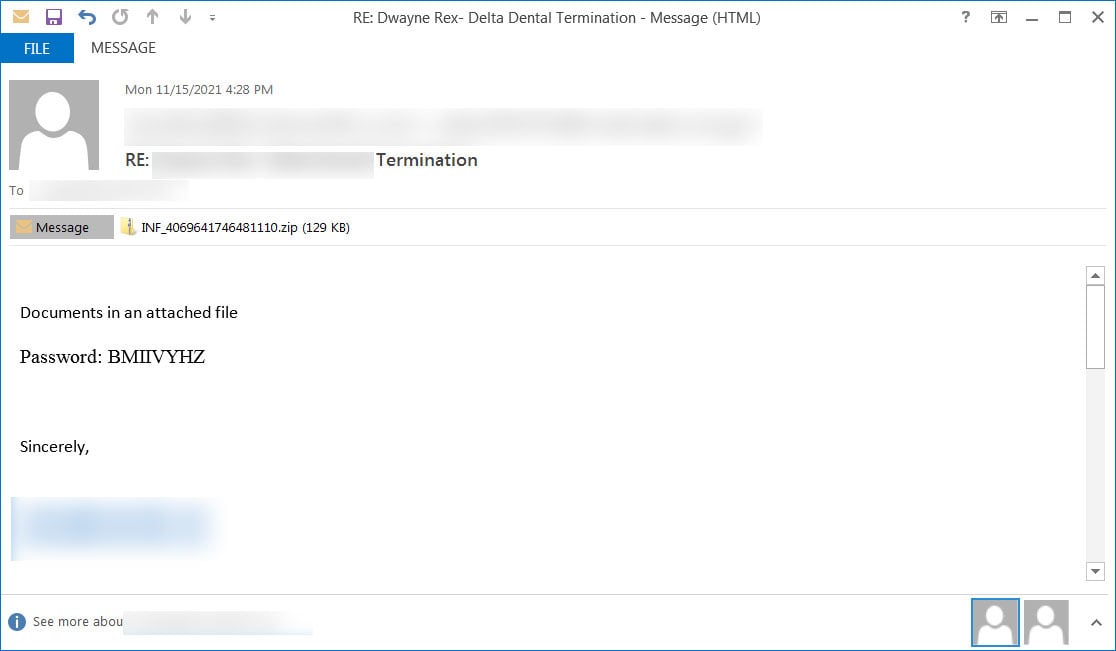
Source: Brad Duncan
There are currently two different malicious documents being distributed in the new Emotet spam campaigns.
The first is an Excel document template that states that the document will only work on desktops or laptops and that the user needs to click on 'Enable Content' to view the contents properly.
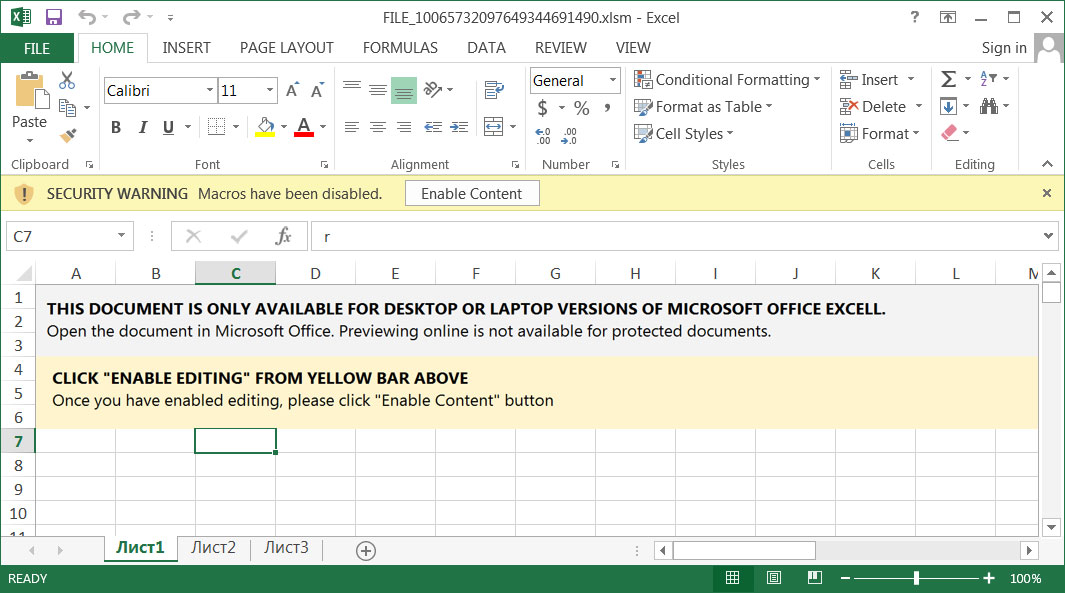
Source: Brad Duncan
The malicious Word attachment is using the 'Red Dawn' template and says that as the document is in "Protected" mode, users must enable content and editing to view it properly.
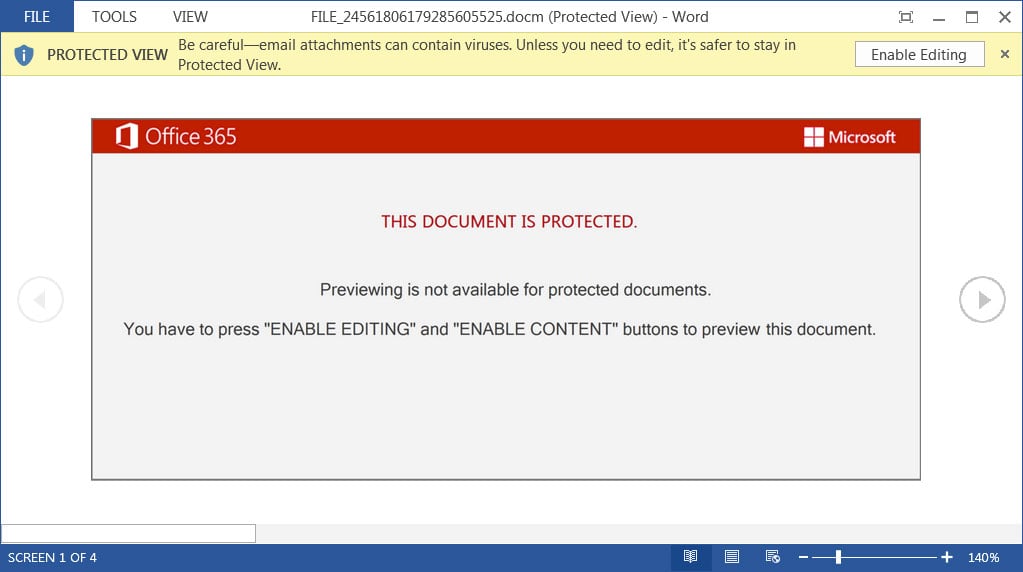
Source: Brad Duncan
How Emotet attachments infect devices
When you open Emotet attachments, the document template will state that previewing is not available and that you need to click on 'Enable Editing' and 'Enable Content' to view the content properly.
However, once you click on these buttons, malicious macros will be enabled that launch a PowerShell command to download the Emotet loader DLL from a compromised WordPress site and save it to the C:\ProgramData folder.

Source: BleepingComputer
Once downloaded, the DLL will be launched using C:\Windows\SysWo64\rundll32.exe, which will copy the DLL to a random folder under %LocalAppData% and then reruns the DLL from that folder.
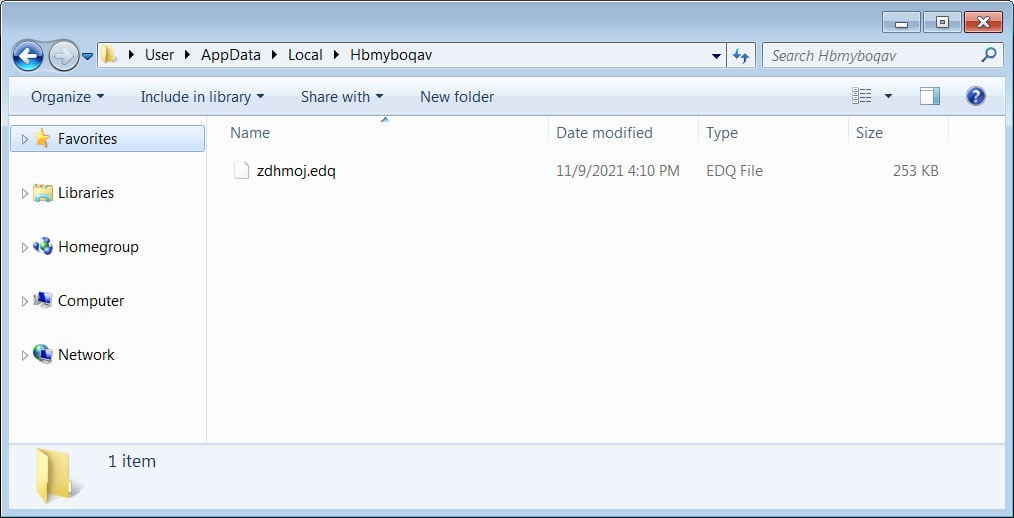
Source: BleepingComputer
After some time, Emotet will configure a startup value under the HKCU\Software\Microsoft\Windows\CurrentVersion\Run to launch the malware when Windows starts.
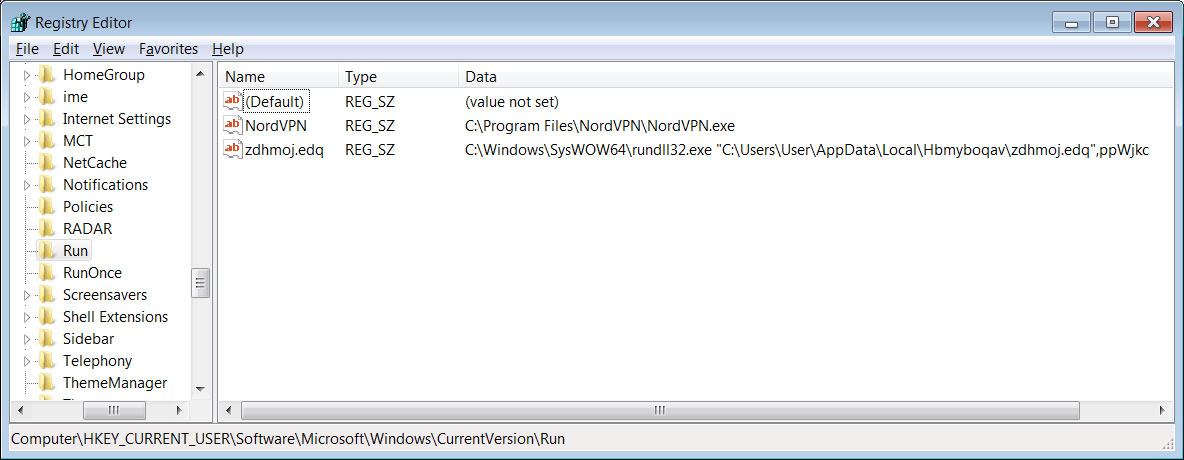
Source: BleepingComputer
The Emotet malware will now silently remain running in the background while waiting for commands to execute from its command and control server.
These commands could be to search for email to steal, spread to other computers, or install additional payloads, such as the TrickBot or Qbot trojans.
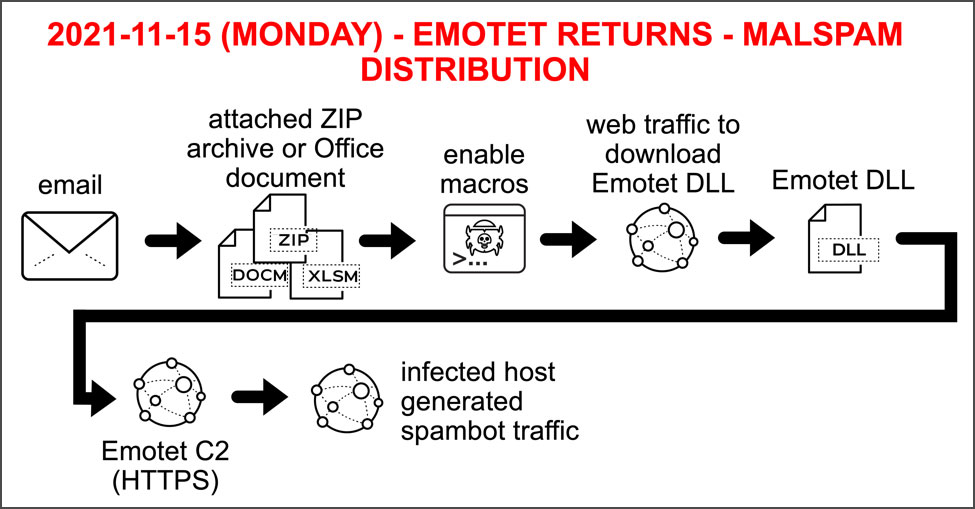
Source: Brad Duncan
At this time, BleepingComputer has not seen any additional payloads dropped by Emotet, which has also been confirmed by Duncan's tests.
"I have only seen spambot activity from my recent Emotet-infected hosts," Duncan told BleepingComputer. "I think Emotet is just getting re-established this week."
"Maybe we'll see some additional malware payloads in the coming weeks," the researcher added.
Defending against Emotet
Malware and botnet monitoring org Abuse.ch has released a list of 245 command and control servers that perimeter firewalls can block to prevent communication with command and control servers.
Blocking communication to C2s will also prevent Emotet from dropping further payloads on compromised devices.
An international law enforcement operation took down the Emotet botnet in January 2021, and for ten months, the malware has not been active.
However, starting Sunday night, active TrickBot infections began dropping the Emotet loader on already infected devices, rebuilding the botnet for spamming activity.
The return of Emotet is a significant event that all network admins, security professionals, and Windows admins must monitor for new developments.
In the past, Emotet was considered the most widely distributed malware and has a good chance of regaining its previous ranking.

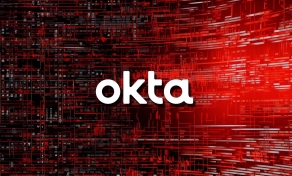
Post a Comment Community Rules
You need to login in order to post a comment
Not a member yet? Register Now